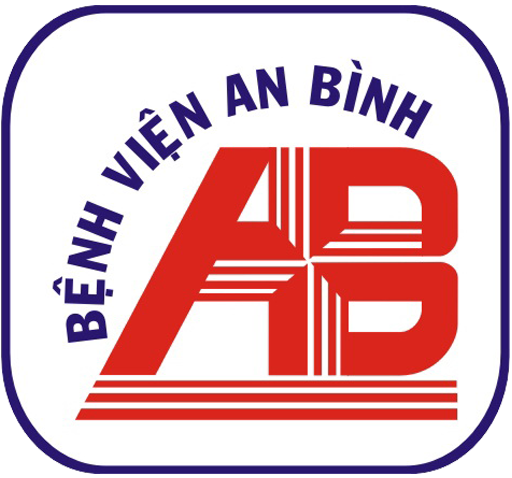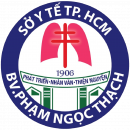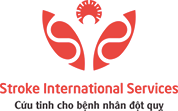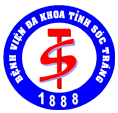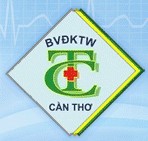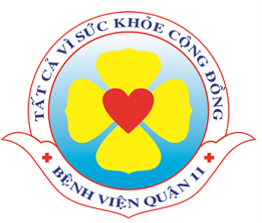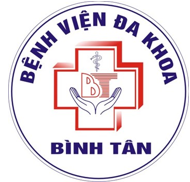1. Introduction: Unveiling the Symbolism of Masks in Human Cultures
Masks have been an integral part of human culture across the ages, serving as powerful symbols that transcend mere concealment. From the elaborate ceremonial masks of African tribes to the theatrical traditions of ancient Greece and Japan, masks function as tools for transformation, communication, and spiritual connection. They allow individuals to embody different identities, explore subconscious truths, and convey complex social messages.
Contents
- Historical and Cultural Significance of Masks in Mythology
- The Archetype of the Mask: Identity, Transformation, and Duality
- Theater Masks as Visual and Narrative Devices
- The Hidden Meanings Behind Mythological Masks
- Media and Modern Interpretations of Masks in Popular Culture
- Le Zeus and the Modern Visualization of Mythological Masks
- Non-Obvious Layers of Mask Symbolism: Beyond the Surface
- Educational Implications: Teaching Through Masks in Mythology and Media
- Conclusion: The Enduring Power of Masks to Convey Hidden Meanings
2. Historical and Cultural Significance of Masks in Mythology
a. Masks as sacred objects in ancient rituals and ceremonies
Historically, masks have held sacred status within numerous civilizations. In African cultures, masks are used in rites of passage and ancestral worship, believed to channel spiritual energy and communicate with spirits. Similarly, in ancient Greece, theatrical masks were integral to Dionysian festivals, symbolizing divine possession and embodying mythic archetypes. In these contexts, masks serve as gateways between the human and divine, facilitating spiritual connection and communal identity.
b. Examples from Greek, Roman, African, Asian traditions
Greek theatrical masks, like the exaggerated features of tragedy and comedy masks, allowed performers to project emotions clearly to large audiences. In Japan, Noh theater employs masks representing spirits and characters, emphasizing subtlety and inner truth. African masks, such as the ceremonial masks of the Dogon people, depict ancestors and mythic beings, serving as spiritual symbols that animate storytelling. Asian traditions, including Chinese opera masks, use vibrant colors and intricate designs to denote character traits and moral qualities.
c. The role of masks in storytelling and myth-telling
Masks act as storytelling devices, allowing mythological narratives to transcend language barriers. They embody archetypes—heroes, gods, monsters—making complex stories visually accessible and emotionally impactful. For example, the masks of Greek tragedies symbolize fate and hubris, while in Asian theater, masks visually encode moral lessons. This tradition underscores masks’ role in fostering cultural continuity and transmitting moral values through generations.
3. The Archetype of the Mask: Identity, Transformation, and Duality
a. Masks as symbols of hidden identities and inner truths
At their core, masks symbolize hidden aspects of identity—facets concealed from the outside world. In mythology, gods and mortals don masks to reveal or hide their true nature. The Greek god Dionysus, associated with wine and ecstasy, was often depicted with a mask representing divine intoxication, hinting at the hidden divine aspect within mortal human experience. Masks thus serve as tools for revealing subconscious truths or protecting inner vulnerabilities.
b. The dual nature of characters: hero vs. villain, divine vs. mortal
Many mythological figures exhibit duality through masks. A hero may wear a mask that conceals their vulnerability, while a villain’s mask signifies moral corruption or chaos. For example, in Roman theater, the masks of tragedians often depicted the inner conflict of characters—ambivalence, moral struggle, or transformation. This duality reflects the complex human nature, emphasizing that identity is layered and multifaceted.
c. Psychological interpretations: masks as reflections of the subconscious
Psychologically, masks symbolize the personas we adopt to navigate social expectations. Carl Jung’s concept of the “persona” aligns with this, representing the social mask that individuals wear. Mythologically, this idea manifests in stories of gods and mortals who assume different identities. Masks become visual metaphors for the unconscious layers of personality, revealing hidden fears, desires, and truths that influence behavior.
4. Theater Masks as Visual and Narrative Devices
a. The origin of theatrical masks in ancient Greece and Japan
The origins of theatrical masks trace back to ancient Greece, where they enabled actors to embody gods, monsters, and exaggerated human emotions, facilitating storytelling in amphitheaters. Similarly, Japanese Noh theater developed masks that depict spiritual beings and human characters, emphasizing subtlety and inner states. These traditions highlight the masks’ role in amplifying emotion and allowing performers to transcend individual identity.
b. How masks convey emotion and character traits through design
Design elements such as color, shape, and expression are carefully crafted to communicate character traits. Bright reds in Chinese opera masks symbolize loyalty or bravery, while dark colors may indicate villainy. Exaggerated features, such as large eyes or mouths, serve to amplify emotions—joy, anger, despair—making them instantly recognizable. This visual language allows audiences to interpret complex characters at a glance.
c. The use of masks to evoke empathy and moral lessons from audiences
Masks foster empathy by allowing viewers to see universal human emotions expressed outwardly. In moral storytelling, masks serve as allegories—heroes wear masks of virtue, villains of vice—guiding audiences toward moral reflection. This pedagogical function persists today in media, where character masks symbolize internal struggles and societal roles, encouraging viewers to explore their own identities.
5. The Hidden Meanings Behind Mythological Masks
a. The significance of masks in mythic narratives: gods, monsters, heroes
In mythology, masks often symbolize divine authority, transformation, or chaos. For instance, the mask of Osiris in Egyptian mythology signifies death and rebirth, embodying divine power over life cycles. Similarly, mythic monsters like Medusa wear masks of terror, representing chaos and the destructive aspects of the divine. These masks serve as visual shorthand for complex stories about morality, power, and transformation.
b. Case Study: The masks of mythological deities (e.g., Dionysus, Osiris)
Dionysus, god of wine and ecstasy, is frequently depicted with a mask embodying divine intoxication—an emblem of chaos, liberation, and transformation. Osiris’ funerary masks, often featuring elaborate headdresses and symbolic motifs, represent divine authority over death and rebirth. These masks are not merely decorative; they encapsulate the core attributes of the deities, reinforcing their mythic roles and conveying layered meanings.
c. The transformation of divine identity through mask symbolism
Divine masks often symbolize a shift in identity—gods donning human or animal masks to interact with mortals, or transforming through rituals. For example, the Greek god Dionysus was associated with theatrical masks that signified his dual nature—divine but accessible through human experience. Such symbolism emphasizes that divine identity is fluid, adaptable, and intertwined with human perception.
6. Media and Modern Interpretations of Masks in Popular Culture
a. Masks in comic books, movies, and video games as symbols of alter egos and mystery
Contemporary media widely employs masks to symbolize secret identities, mystery, and transformation. Superheroes like Batman or Spider-Man wear masks that conceal their true selves, representing the duality of human nature. Villains, such as Darth Vader or the Joker, use masks to embody chaos or morality. Video games like “Le Zeus” exemplify modern storytelling, where mask symbolism reinforces themes of identity and hidden powers.
b. The evolution of masks from traditional to contemporary representations
While traditional masks were rooted in ritual and myth, modern masks are often stylized, emphasizing aesthetic appeal and psychological complexity. The transition reflects shifts in cultural values—from spiritual symbols to expressions of individuality or rebellion. For instance, comic book masks are designed to be iconic, recognizable symbols that carry layered meanings—secret identities, moral alignments, or personal histories.
c. Examples: superhero masks, villain disguises, cultural references
Superhero masks like the iconic cowl of Batman symbolize justice and secrecy. Villain disguises, such as the mask of the Phantom or the mask of Harley Quinn, evoke chaos and moral ambiguity. Cultural references, such as the Venetian masks of Carnevale, connect modern media to ancient traditions, emphasizing masks’ enduring symbolic power across eras and genres.
7. Le Zeus and the Modern Visualization of Mythological Masks
a. How modern media, exemplified by games like Le Zeus, incorporate mask symbolism
“Le Zeus” exemplifies how contemporary digital media adopt mythological motifs to craft engaging narratives. The game’s characters often wear stylized masks that symbolize transformation, heroism, or chaos—echoing ancient traditions. These masks serve as visual cues for players, linking the game’s universe to the rich symbolism of myth and theater, making complex themes accessible and immersive.
b. The visual style: cartoonish, approachable, yet layered with meaning
The art style in “Le Zeus” is deliberately cartoonish, making mythic themes approachable for a broad audience. Despite the playful design, masks retain layered meanings—signifying identity shifts, moral allegories, or power dynamics—demonstrating that even modern media can embed deep symbolism within accessible visuals. For more insights into how modern games use mythological elements, visit le-zeus.uk.
c. The role of symbols like the Wild (golden ‘W’ on a shield) in reinforcing themes of identity and transformation
Symbols such as the golden ‘W’ in “Le Zeus” evoke notions of heroism, victory, and transformation. Such iconography functions as a modern mask—visual shorthand for character traits, moral values, and narrative arcs—mirroring the way ancient masks encapsulated divine or mythic essence. This demonstrates how modern media continues the tradition of using symbols to layer meaning beneath simple visuals.
8. Non-Obvious Layers of Mask Symbolism: Beyond the Surface
a. Masks as tools for social hierarchy and power dynamics
Beyond individual identity, masks often signify social status and authority. In ancient societies, masks distinguished priests, kings, or shamans, establishing hierarchy and control. In media, such as political caricatures or theatrical portrayals, masks symbolize social roles and power structures, revealing underlying societal dynamics.
b. The psychological impact of wearing masks on individual behavior
Psychologically, wearing a mask can influence behavior, enabling individuals to act beyond their usual constraints. The “mask effect” in social psychology suggests that concealment can increase confidence or disinhibition. Mythologically, this is reflected in stories where gods or mortals adopt masks to access different facets of their psyche, emphasizing masks’ role in identity experimentation.
c. The interplay between concealment and revelation in personal and collective identity
Masks create a tension between hiding and revealing. They conceal vulnerabilities while also serving as a platform for authentic expression. This duality is central in myths—disguise as a means of protection or transformation—and in modern contexts, such as social media or performance art, where masks symbolize both concealment and authenticity.
<h2 id=”education” style=”






